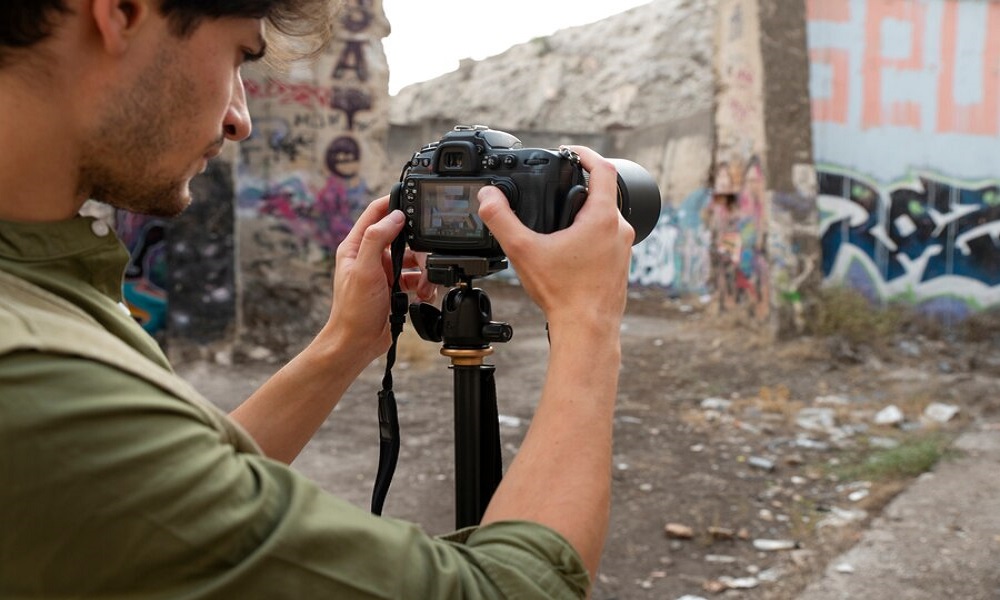

Photographer – Salik Ahmad –
Captioned: 90-year-old Kajodi trudges home 400 km away amid coronavirus lockdown.
Published in – https://www.outlookindia.com/website/story/india-news-90-year-old-kajodi-trudges-home-400-km-away-amid-coronavirus-lockdown/349525
Many years ago, the Wanted Series initiated the dialogue on ethics in photography. A seminar was organised at Max Muller Bhavan Delhi in collaboration with Goa-Cap and Askar. Subsequently, the Goethe Institute at New Delhi tried to formulate a working group which would explore the question of Ethics in photographic practices. A large seminar was followed by a couple of close think-thank meeting, and then we all disappeared. Going back to the conversation that we generated, I remember being numbed by the impossibility of it all. Yet, ethics as praxis and as a concept metaphor has always remained important to me as a critical tool while looking at (looking through) any cultural act or artefact. In today’s world, we can no longer hold on to the notion of a ‘Universal Good’. Over the years my notions of ethics have been shaped by moral negotiation processes, red-flagging arbitrariness or manipulation.


Kevin Carter, ‘The vulture and the Little Girl’, first appeared in The New York Times on 26 March 1993. Image taken from https://en.wikipedia.org/wiki/The_vulture_and_the_little_girl
‘The Vulture and the Little Girl’ is perhaps one of the earliest instances in
recent memory which threw up grave questions regarding ethics in
photojournalist practices. Initially, Carter claimed to have
come upon the scene, snapped a few photos, and then chased the bird away.
“You won’t believe what I’ve just shot! … I was shooting this kid on her knees, and then changed my angle, and suddenly there was this vulture right behind her! … And I just kept shooting – shot lots of films. Silva asked him where he shot the picture and was looking around to take a photo as well. Carter pointed to a place 50 m (160 ft) away. Then Carter told him that he had chased the vulture away. He told Silva he was shocked by the situation he had just photographed, saying, “I see all this, and all I can think of is Megan”, his young daughter. ” (https://joesackcom.wordpress.com/2019/08/01/the-vulture-and-the-child-what-happened-next/)
These were Carter’s immediate words to his colleague João Silva, (a part of the Bang- Bang
Club specialising in reporting from conflict areas). However, Carter eventually
admitted that he watched the scene for about twenty minutes,
waiting for the vulture to get closer to the boy and hoping that it would
spread its wings for a more dramatic photo. After the vulture refused to
move, Carter finally chased the bird away.
Salik Ahmad’s ‘ 90-year-old Kajodi trudges home 400 km away amid
coronavirus lockdown‘ succeeded in spotlighting the effect of CONVID
lockdown on the migrant labourers of India, apart from photo narrating plights
of victims during the conflict, it also bears similarity to Carter’s image in
the use of dramatic foreshortening and depth-of-field. There is one
crucial difference and this perhaps reflects the culture of consumption in our
times. The readers of Outlook and the online viewers of the image raised no
question regarding the fate of Kajodi. How did the photographer intervene in a
human capacity? Did he (even) offer her some water to drink? Has Kajodi reached
home?
Many years ago…in the early 90’s Cater and New York times had to
face these questions and these questions made the photographer and publication
realise that lines between being a photographer and being a human being could
not be blurred beyond a point. Carter’s eventual suicide about 5 years after
taking the photograph should not be directly linked to the psyco-emotional
impact of ‘The Vulture and
the Little Girl’. He
had seen enough morbid violence and death in South Africa and Sudan for any
sensitive soul to be deeply affected.
Contrary to perception,
photojournalism has an uneasy relationship with ‘truth’. The ‘girl’ from South
Sudan turned out to be a boy, and Carter framed the shot to maximise the
impression that this disaster was taking place in the ‘middle of nowhere’ where
in reality it was on a runway with her parents just a few minutes away in a
place surrounded by UN workers and journalists. In Salik
Ahmad’s work, I do not know if her name is really Kajodi, is she really 90
years old? Is her village really 400 km away? Such details get lost in the
spectacle of a tragedy and conflict generates. In a way, way beyond truth, this
is a work in the politics of representation.
Photographers easily forget that their subject matter is (at least) an
equal collaborator in the economic and cultural capital a picture produces.
They also (always) forget that they are very much a part of the frame, that
they exist within the photograph and not outside it. If political photography
and photojournalism want to break through the structures they critique, these
realisations are important.
Author:
Rahul Bhattacharya, Associate Professor, School of Communication, Unitedworld Institute of Design (UID)






